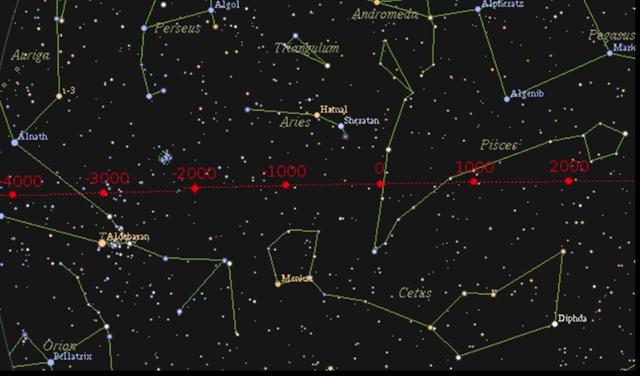He did not begin side a of his tablet at MARCH 25 (where once upon a time Aldebaran had risen with the Sun). Instead he began his text a few days earlier (i.e. a few precessional days later). Perhaps his intention was to have γ Tauri at the origin:
From γ Tauri the pair of Bull horns stretched ahead, with the northern horn towards Elnath (β) and the southern towards ζ, which star was close to Messier 1, M1, the Crab Nebula:
It could have been imagined that the northern horn of the Bull represented the sky above and its southern horn the earth below: They were Ranginui, the Sky Father, and Papatuanuku, the Earth Mother, both sealed together in a close embrace. Crushed between the weight of their bodies were their many children, whose oppression deepened. They yearned to be free; they fought their parents and each other to break loose. Tuumatauenga, virile god of war, thrust and shouted; Tangaroa of the oceans whirled and surged; Tawhirirangimaatea, Haumiatiketike and Rongomatane, of wild foods and cultivated crops, tried their best but were not successful; and Ruamoko, god of earthquakes, yet to be born, struggled in the confinement of his mother's womb ... Of them all, Taane Mahuta, the god of the forests, was the most determined; he set his sturdy feet upon his father's chest, and braced his upper back and shoulders against the bosom of his mother. He pushed; and they parted. So the world, as the Maori understand it, came into being. (D. C. Starzecka, Maori Art and Culture.) When Sky and Earth (or the horns of the Bull) were forced to separate, then space with light and air was allowed to enter in between them. Night changed to day. At heliacal γ Tauri (Hyadum I) there was 'a close embrace', but at Hyadum II (δ¹) a difference could be felt. I think the creator of the G text placed Hyadum I at the end of side b and Hyadum II at the beginning of side a:
5 precessional days (glyphs) * 71 = 355 years, and 355 (= 12 * 29½ + 1) was the day number for the December solstice. According to my precessional model these 355 years (or days) corresponded to the distance from 2702 B.C. when Aldebaran would have served as the representative of the Bull at the northern spring equinox in MARCH 25 to the time when heliacal γ Tauri (Hyadum I) reached the same position (i.e. day 84 counted from the beginning of the year). 355 = 2702 - 2347. Had there been 80 days from JANUARY 1 to the northern spring equinox, then the rising fish would have been placed 4 positions earlier in the text - at δ¹ Tauri. But then Aldebaran would have risen 4 days later than the equinox. The sometimes estimated year 3000 B.C. for the position of Aldebaran at the northern spring equinox was probably based on MARCH 21 as its date. 4 * 71 = 284 and 2702 + 284 = 2986, i.e. ca 3000 B.C. When youngster from Bethlehem with his sling
slew the giant, it meant the era of Taurus was defeated. David was a shepherd which meant Aries would follow.
Golgotha ... graveyard ... gogolđā, Aram. form of Heb. gulgōleđ skull ... (The Oxford Dictionary of English Etymology.)
Looking from a point far above and down onto the celestial sphere the flow of time would be perceived to run from left to right and the horns of the Bull should then be oriented towards the right instead of towards the left. Therefore it is possible the creator of the G text wished to present the horns of the Bull at right in Ga1-1.
Above the Pleiades cluster of stars was Perseus and traditionally he was depicted with the decapitated head of an old woman:
In the sky, Perseus lies next to his beloved Andromeda. Nearby are her parents Cepheus and Cassiopeia, as well as the monster, Cetus, to which she was sacrificed. Pegasus, the winged horse, completes the tableau. Perseus himself is shown holding the Gorgon’s head. The star that Ptolemy called ‘the bright one in the Gorgon head’ is Beta Persei, named Algol from the Arabic ra’s al-ghul meaning the demon’s head. (As an aside, al-ghul is also the origin of our word alcohol - quite literally ‘the demon drink’. Algol is the type of star known as an eclipsing binary, consisting of two close stars that orbit each other, in this case every 2.9 days. (ianridpath.com) |
||||||||||||||||||||||||||||||||||||||||||||||||||







